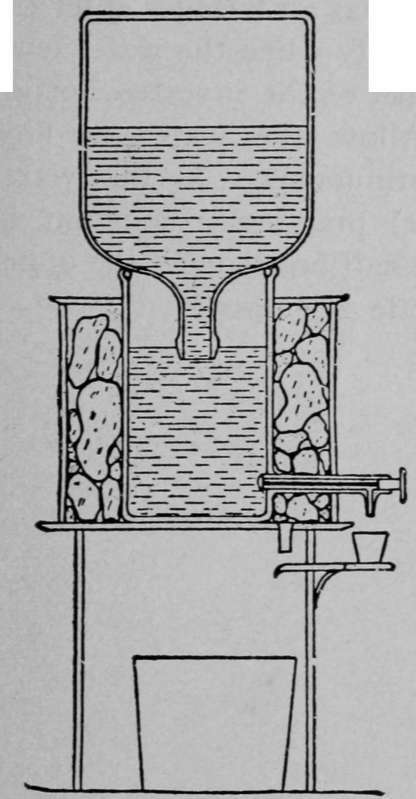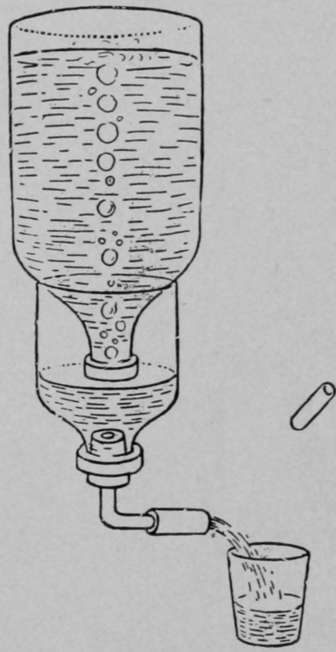Experiment 80. A Drinking Fountain
Description
This section is from the book "Experimental Glass Blowing For Boys", by Carleton J. Lynde. Also available from Amazon: Experimental Glass Blowing for Boys.
Experiment 80. A Drinking Fountain
The drinking fountain (Fig. 104) is similar in principle to the poultry fountain of the last experiment. The water is held in the large inverted bottle by the atmospheric pressure on the water in the lower vessel. Air enters the bottle and water escapes from it when the level of the water in the lower vessel falls below the mouth of the bottle. The water is cooled by the ice surrounding the lower vessel.
Make a drinking fountain of this kind as in Fig. 105, ask a friend to hold it, remove the glass plug from the coupling, and draw a glass of water. Do you observe that air bubbles enter the inverted bottle and water flows from it only when the water level in the half bottle falls below the mouth of the inverted bottle?
Allow the water to flow continuously. Is the water level practically constant in the half bottle until the upper bottle is empty?

Fig. 104. A drinking fountain (From Butler's Household Physics. Published by Whitcomb & Barrows, Boston)

Fig. 105. Homemade drinking fountain
Continue to:
